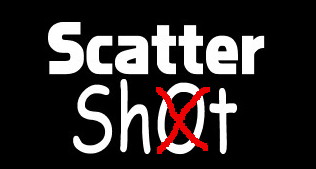| Buy Fanzing's first comic: "Job Wanted"! |

by David R. Black
This ain't no party, this ain't no disco, this ain't no foolin' around! Let's go!
3X2(9YZ)4A!
I recently read Under a Yellow Sun, a Superman one shot written by John Francis Moore and illustrated by the trio of Eduardo Barreto, Kerry Gammill, and Dennis Janke. Described as "a novel by Clark Kent," Under a Yellow Sun only partially lives up to its billing.
Expecting something similar to The Life Story of the Flash, which was "written" by Iris West (with the help of Mark Waid, Brian Augustyn, and others) and told primarily in prose format, I was surprised that Under a Yellow Sun has more similarities to a regular Superman comic. Not that a regular Superman comic is a bad thing, mind you, but it wasn't what I was expecting.
Under a Yellow Sun focuses on Clark Kent's frustrations. Frustrations with his job, frustrations with earning a relatively low salary (compared to his peers working for LexCorp), and frustrations over tirelessly fighting the good fight without any compensation or consideration. It's easy to be Superman, and it's easy to be Clark Kent, but being both requires a Herculean effort.
As a long time comic reader, I tend to take that for granted. It's so easy to think that Clark/Superman has his life under control, and that nothing can shake the Man of Steel's confidence. However, a scene where Clark confronts the electric company over an unpaid bill (the company shuts off his power) shows how human Clark is. After clashing with an uncaring company representative, Clark recalls Lex Luthor's long standing offer to Superman.
"Come work for me," said Lex to Superman. "Think about how much easier I can make your life. It sure beats struggling."
As Clark sits in his darkened apartment, the reader wonders if he just might accept Luthor's offer. How many of us would? If we had unlimited power, how many of us would choose the path Clark has chosen? Would we choose the tough path of righteousness or the easy path of comfort?
And therein lies the theme of Moore's story. Amidst the pressures of a his day job at the Daily Planet, his agent hounding him to submit the final draft of his second novel, a steady girlfriend (the story was written in 1994, before Lois and Clark married), and the rigors of being Superman, the cracks begin to form in Clark's soul.
Fighting a major case of writer's block, Clark uses his frustrations to his advantage. Using a thinly veiled version of his own experiences, Clark's book features a Superman-esque character named David Guthrie, a Lois type character named Rebecca Carr, and a villain patterned after Luthor named Preston Trager.
Guthrie, a former Navy Seal and current lawyer, suffers a crisis of conscience when forced to flee the offices of his free law clinic in Suicide Slum. After years of helping people, Guthrie realizes that he hasn't done anything for himself. Creditors chase him, he has few close friends, and he can't meet the needs of everyone who comes to him for help.
Ending up on Corto Maltese, an island country in the Caribbean, Guthrie temporarily abandons his morals and joins the employ of Preston Trager, the island's dictator. Guthrie enjoys the money and the perks of his job (i.e. scantily clad women), but doing Trager's dirty work begins to weigh heavily on his soul. Soon afterwards, Guthrie finds himself helping the rebel forces trying to oust Trager from power.
The story proceeds to a somewhat predictable ending, but it's enjoyable getting there. Moore weaves two parallel plots into one coherent story, and the novel portions of the story alternate with the "real world Metropolis" portions of the story. Differentiating the two is easy, thanks to the artists and colorists involved.
Eduardo Barreto, who provides the artwork for the novel portions, has a decidedly different style than Gammill and Janke, who pencil and ink the Metropolis sequences. Colorists Sherilyn van Valkenburgh and Glen Whitmore noticeably contribute to the book's feel, more so than colorists normally do. Valkenburgh's palette for the novel is full of dark, earthly tones which beautifully create the darker tone and atmosphere of the island of Corto Maltese. Whitmore's palette, used in the Metropolis sequences, has bright, lively tones which create a nice contrast to Valkenburgh's palette.
Overall, Under a Yellow Sun is a solid Superman story which uses a parallel story telling technique beautifully. Both Superman aficionados and the casual reader will enjoy it. And the moral of the story (Trager's comment "I made it out with my soul intact. I guess I'll never get rich, but at least I can live with myself.") is a timeless one.
Signs that you've read too many comic books:
- When your car battery dies, you wish you had powers like Lightning Lad or Live Wire. One well placed zap of energy, and you wouldn't have to walk to work.
- Your know more about the history of fictional countries than you do about your own country's history.
- You can spell "villain" without needing to use spell check.
- When asked if you know any foreign languages, you ask if Interlac counts.
- When asked what makes you qualified for a job, you say you're fearless and totally honest. (And, in some cases, closer than anybody else).
In last month's "If I Ran DC" column, Editor-in-Chief Hutchison listed a number of titles and story arcs that deserve to be compiled in trade paperback format. One good deed deserves another, so I've developed my TPB wish list, too!
Making my list was tougher than I'd originally envisioned. I wanted to stay away from series that are readily (and cheaply) available in discount bins everywhere. I also tried to weed out sentimental favorites and limit my choices to series that a majority of readers would enjoy. In other words, as much as I love Time Masters, for example, I doubt there's much of an audience for a TPB collecting the miniseries. I tried to think like a DC editor, limiting myself to a collection that would sell.
Number one on my list is Who's Who. Granted, a lot of Who's Who issues can be found in cheapo bins, but a few are much tougher finds. The Superman issue (#22 of the original series) is especially difficult to find. Nonetheless, Who's Who was a ground breaking series - the first undertaking of a massive, comprehensive cataloguing project of the DCU - that deserves reprinting.
Naysayers might argue that some of the information it contains is outdated, but so what? Who's Who contains a lot of basic information that hasn't changed, and it serves as a great introduction to the DCU. From an economic standpoint, a collection would appeal to both long-time and new readers alike.
As a long time reader, my collection of Who's Who is so dog-eared that some issues are literally falling apart. I've bought a few replacement issues, but a nice new TPB that collects all 26 issues would reduce wear and tear tremendously.
From a new reader standpoint, I'll say three words - Secret Files stink. A price tag of $4.95 or $5.95 for a paragraph or two for each character? C'mon, that's a Cliff's Notes version of Who's Who! Yes, Secret Files have a story or two in them, but as an alleged repository of character information they fall short. Additionally, the only characters featured in Secret Files are those appearing in a currently published book. If you want to learn about an older character or a character currently in limbo, you're out of luck.
Second on my list is All Star Squadron. With the JSA experiencing an unprecedented resurgence in popularity, isn't it time Roy Thomas' masterpiece was collected? DC has recently taken steps to reprint the earliest JLA-JSA teamups from Justice League of America to satisfy the yearnings of fans of the former Earth 2 heroes, and two TPBs of the current JSA series are already available.
Granted, JSA scribes Geoff Johns and David Goyer have done an excellent job of making JSA accessible to new readers by not relying excessively on past continuity, but since new readers seem interested in the team's past history anyway, DC should consider an All Star Squadron TPB. Design the TPBs much like Starman TPBs - by putting one or two complete story arcs in one TPB - and slowly collect the whole series. In fact, a JSA themed month (much like DC has done before with Green Lantern, the Flash, and others) would provide a great launching point for a series of TPBs.
The comic industry is currently a boom of 80's nostalgia, with properties such as the Transformers, GI Joe, and the Thundercats selling like hotcakes. All Star Squadron, having been published in the 1980's, could cash in on this fad. And if the TPB series proves popular enough, DC could continue the series with TPBs of Young All Stars and Infinity Inc.
Third on my list is Bat Lash. This seven issue series written by Denny O'Neill and Sergio Aragones and gorgeously illustrated by Nick Cardy is an overlooked gem published 1968 and 1969. Bat Lash, a perennially popular guest star, is only second to Jonah Hex in terms of popularity amongst DC's Western heroes/cowboys.
Interestingly, the Western genre has experienced a modest resurgence of popularity with titles. DC's The Kents, Vertigo's Weird Western Tales and El Diablo, and Marvel's Blaze of Glory and Apache Skies have all had respectable sales figures. Cardy's popularity on the convention circuit would also make a Bat Lash TPB an decent seller.
Interestingly, all of my choices were published in an era from which DC has done few TPBs. How many TPBs from the 1960's, 1970's, and 1980's have been published? I can name a few, but TPB's of golden age, silver age, and 1990's material are far more numerous. DC needs to focus more effort on reprinting material originally printed between 1969 (the end of the Silver Age) and 1986 (prior to Crisis on Infinite Earths).
Until next month, thanks for reading!
Z2 5Y(2AB)6!
David R. Black is Fanzing.com's magazine editor and chief archivist. A big fan of "The Warlord," he has a cat named Shakira and is looking for a girlfriend named Tara....
| |
Now that you've read this piece, |

